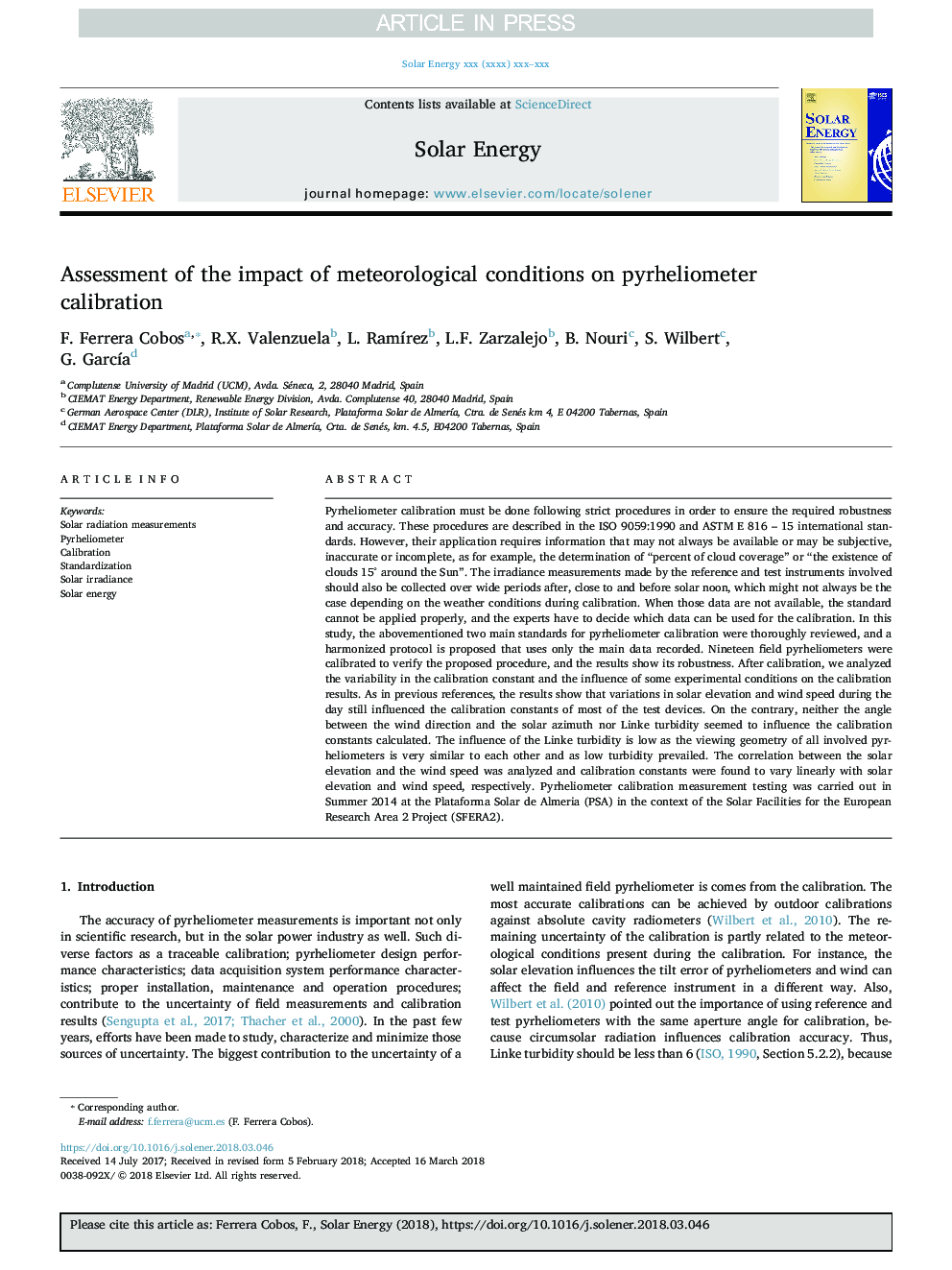| کد مقاله | کد نشریه | سال انتشار | مقاله انگلیسی | نسخه تمام متن |
|---|---|---|---|---|
| 7935199 | 1513050 | 2018 | 16 صفحه PDF | دانلود رایگان |
عنوان انگلیسی مقاله ISI
Assessment of the impact of meteorological conditions on pyrheliometer calibration
ترجمه فارسی عنوان
ارزیابی تاثیر شرایط هواشناسی بر کالیبراسیون سنجش سنج
دانلود مقاله + سفارش ترجمه
دانلود مقاله ISI انگلیسی
رایگان برای ایرانیان
کلمات کلیدی
اندازه گیری های تابش خورشیدی، قرقره سنج، کالیبراسیون، استاندارد سازی، تابش خورشیدی، انرژی خورشیدی،
موضوعات مرتبط
مهندسی و علوم پایه
مهندسی انرژی
انرژی های تجدید پذیر، توسعه پایدار و محیط زیست
چکیده انگلیسی
Pyrheliometer calibration must be done following strict procedures in order to ensure the required robustness and accuracy. These procedures are described in the ISO 9059:1990 and ASTM E 816 - 15 international standards. However, their application requires information that may not always be available or may be subjective, inaccurate or incomplete, as for example, the determination of “percent of cloud coverage” or “the existence of clouds 15° around the Sun”. The irradiance measurements made by the reference and test instruments involved should also be collected over wide periods after, close to and before solar noon, which might not always be the case depending on the weather conditions during calibration. When those data are not available, the standard cannot be applied properly, and the experts have to decide which data can be used for the calibration. In this study, the abovementioned two main standards for pyrheliometer calibration were thoroughly reviewed, and a harmonized protocol is proposed that uses only the main data recorded. Nineteen field pyrheliometers were calibrated to verify the proposed procedure, and the results show its robustness. After calibration, we analyzed the variability in the calibration constant and the influence of some experimental conditions on the calibration results. As in previous references, the results show that variations in solar elevation and wind speed during the day still influenced the calibration constants of most of the test devices. On the contrary, neither the angle between the wind direction and the solar azimuth nor Linke turbidity seemed to influence the calibration constants calculated. The influence of the Linke turbidity is low as the viewing geometry of all involved pyrheliometers is very similar to each other and as low turbidity prevailed. The correlation between the solar elevation and the wind speed was analyzed and calibration constants were found to vary linearly with solar elevation and wind speed, respectively. Pyrheliometer calibration measurement testing was carried out in Summer 2014 at the Plataforma Solar de Almeria (PSA) in the context of the Solar Facilities for the European Research Area 2 Project (SFERA2).
ناشر
Database: Elsevier - ScienceDirect (ساینس دایرکت)
Journal: Solar Energy - Volume 168, 1 July 2018, Pages 44-59
Journal: Solar Energy - Volume 168, 1 July 2018, Pages 44-59
نویسندگان
F. Ferrera Cobos, R.X. Valenzuela, L. RamÃrez, L.F. Zarzalejo, B. Nouri, S. Wilbert, G. GarcÃa,
